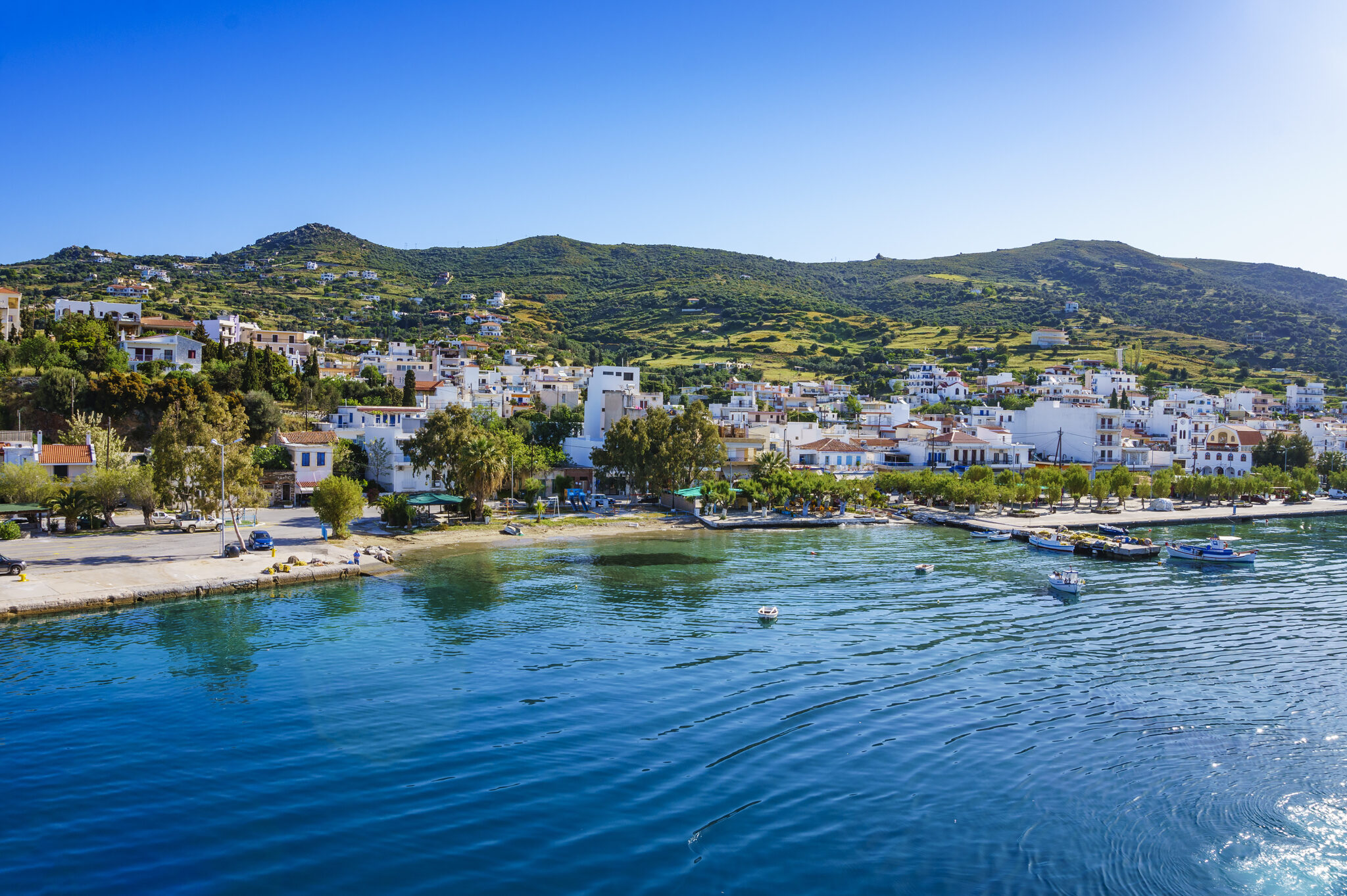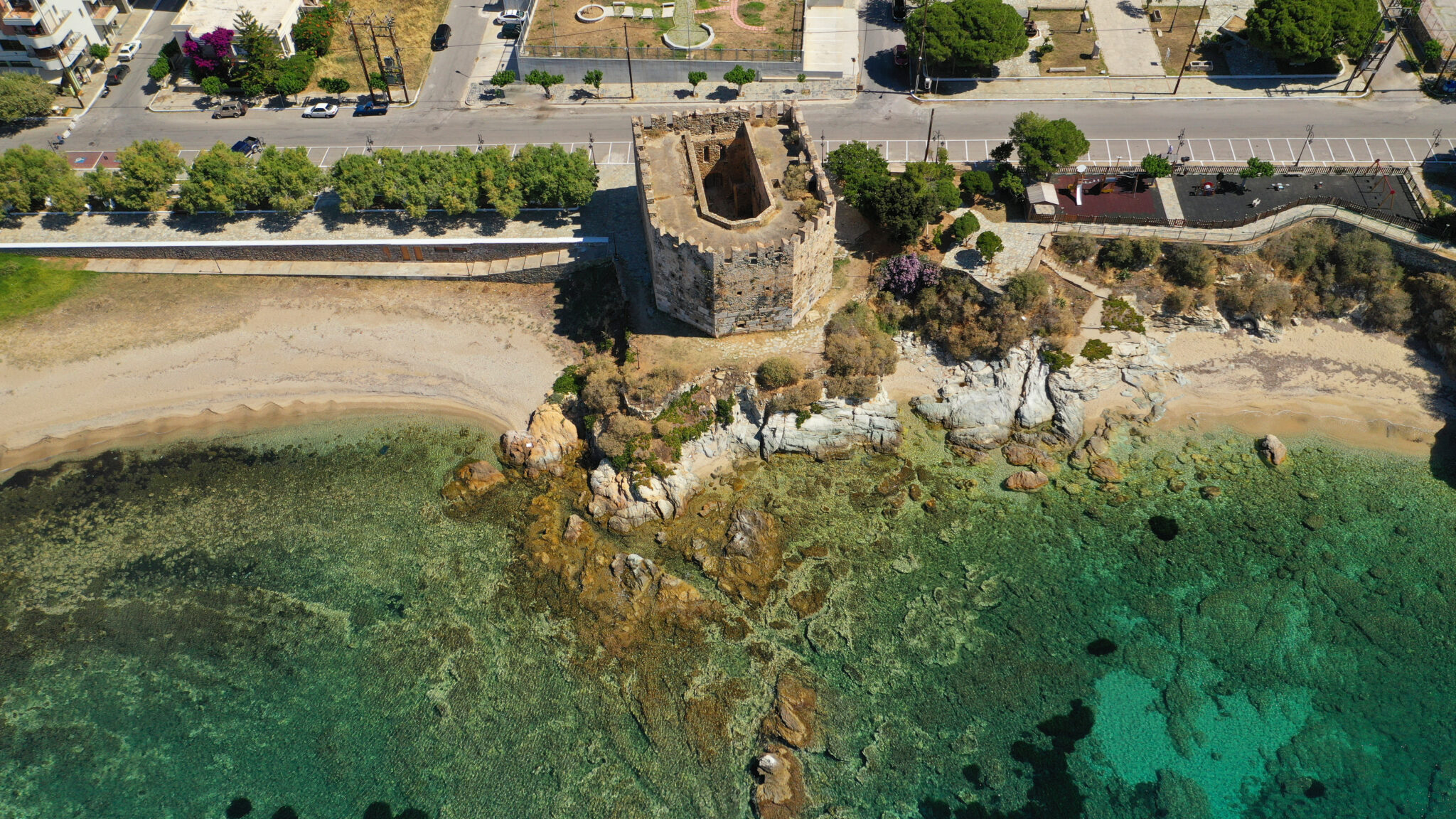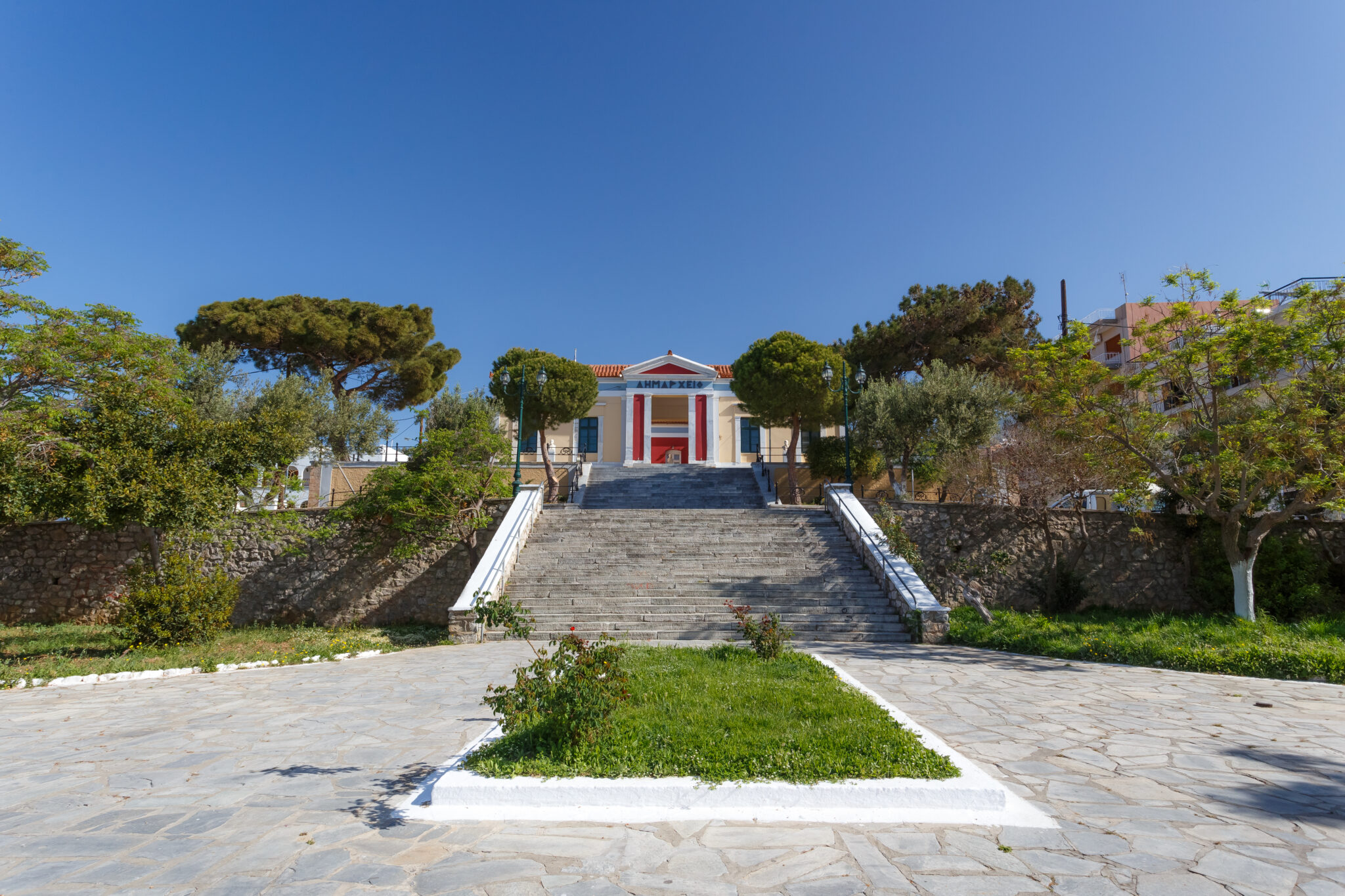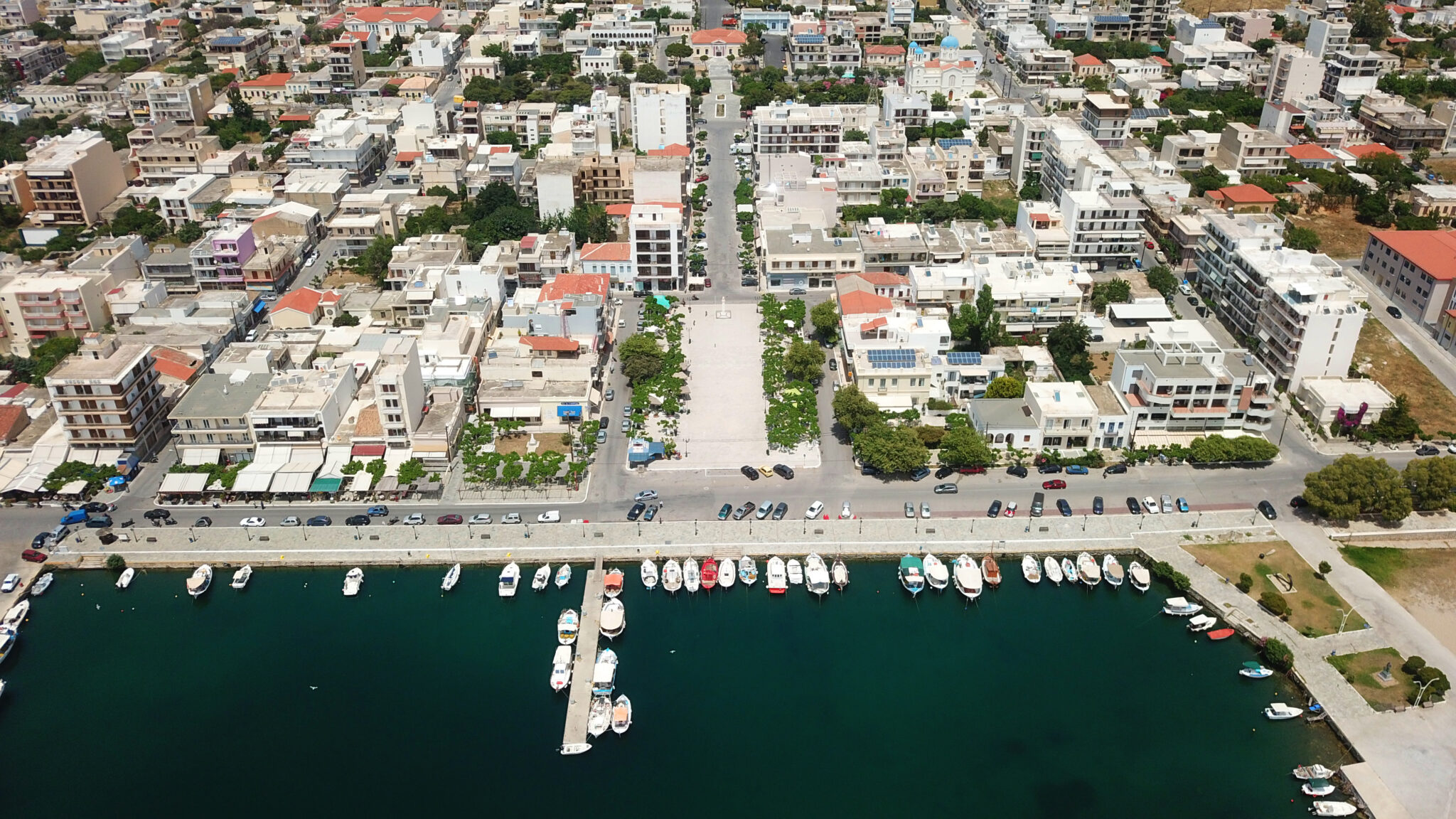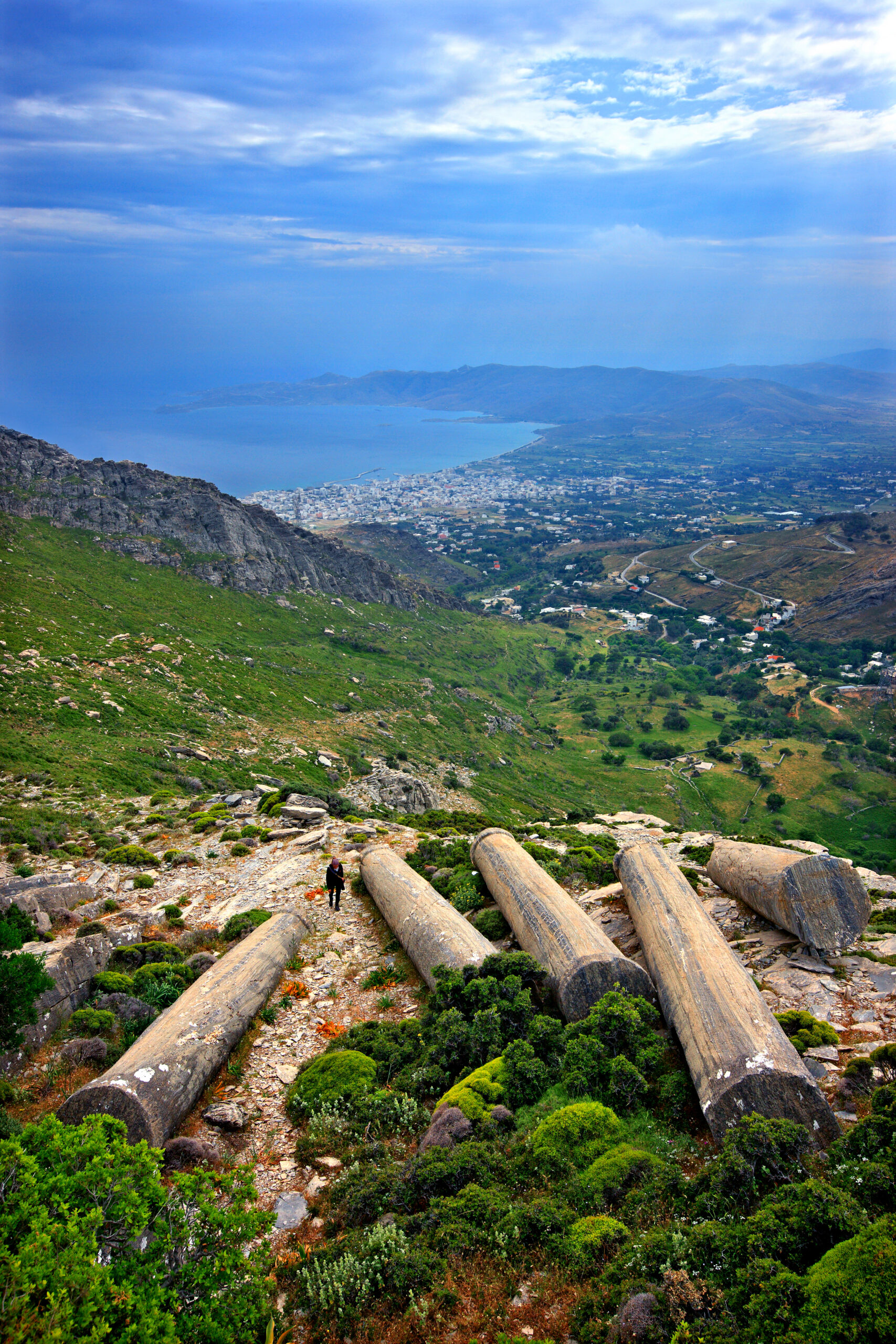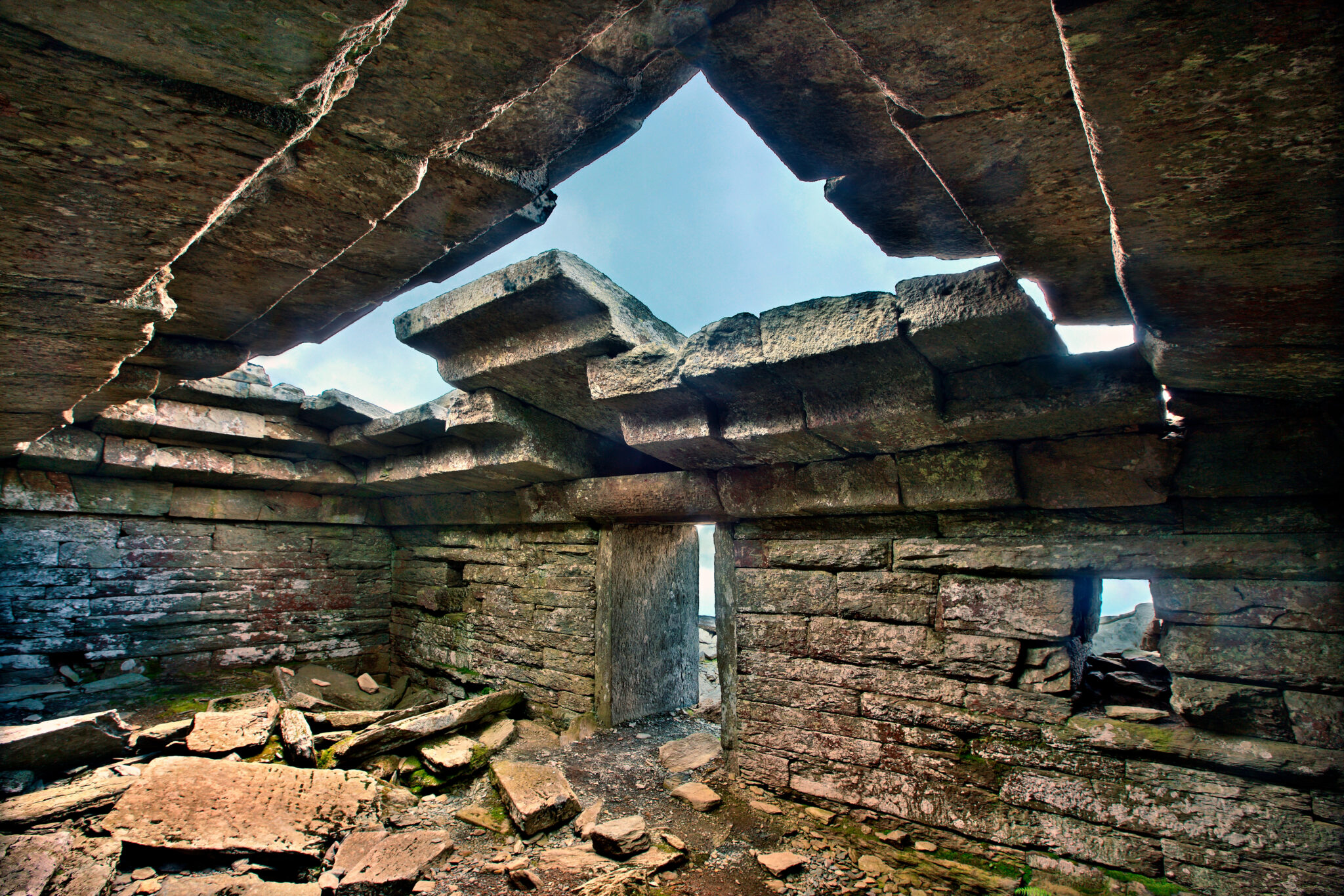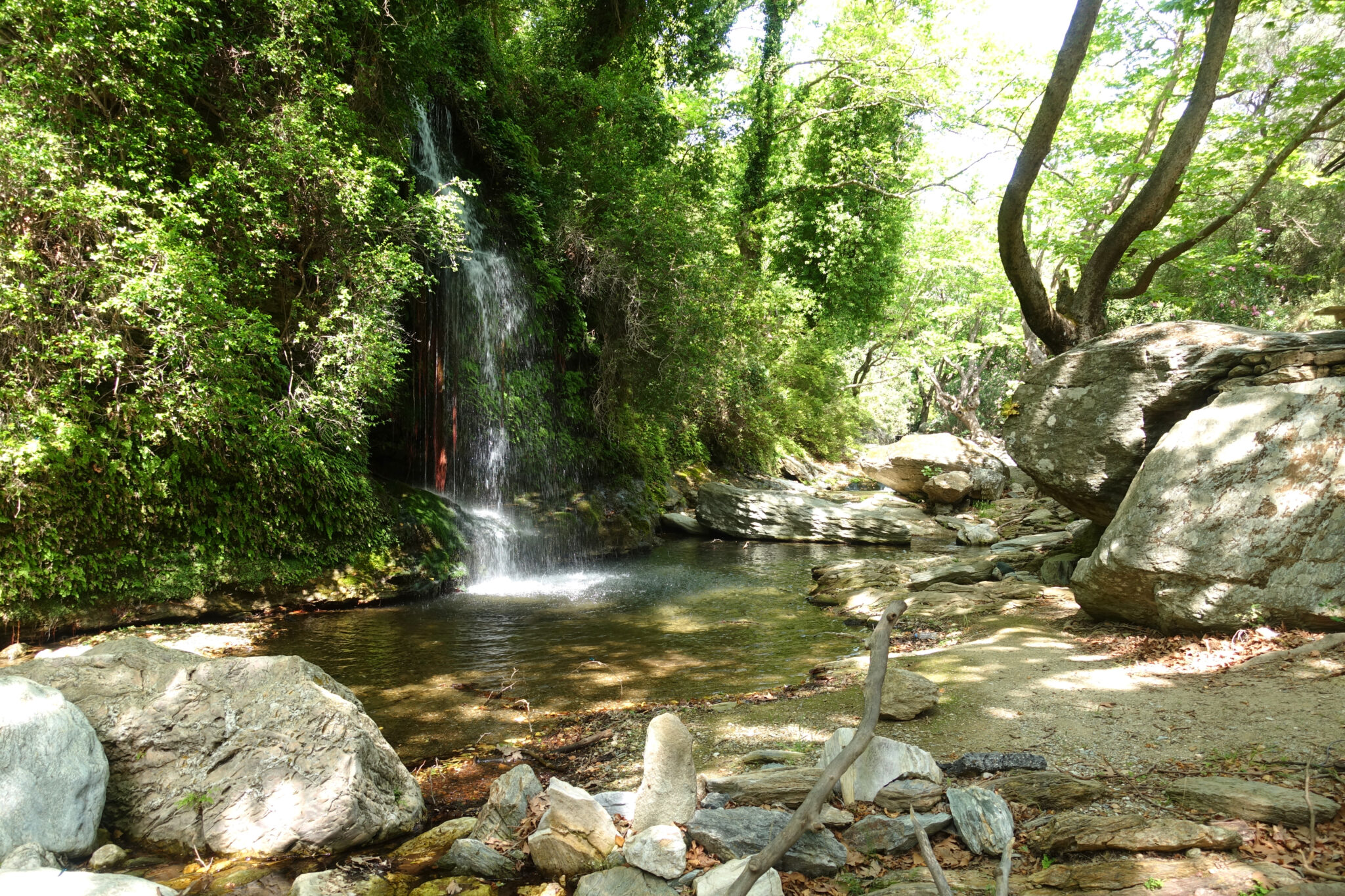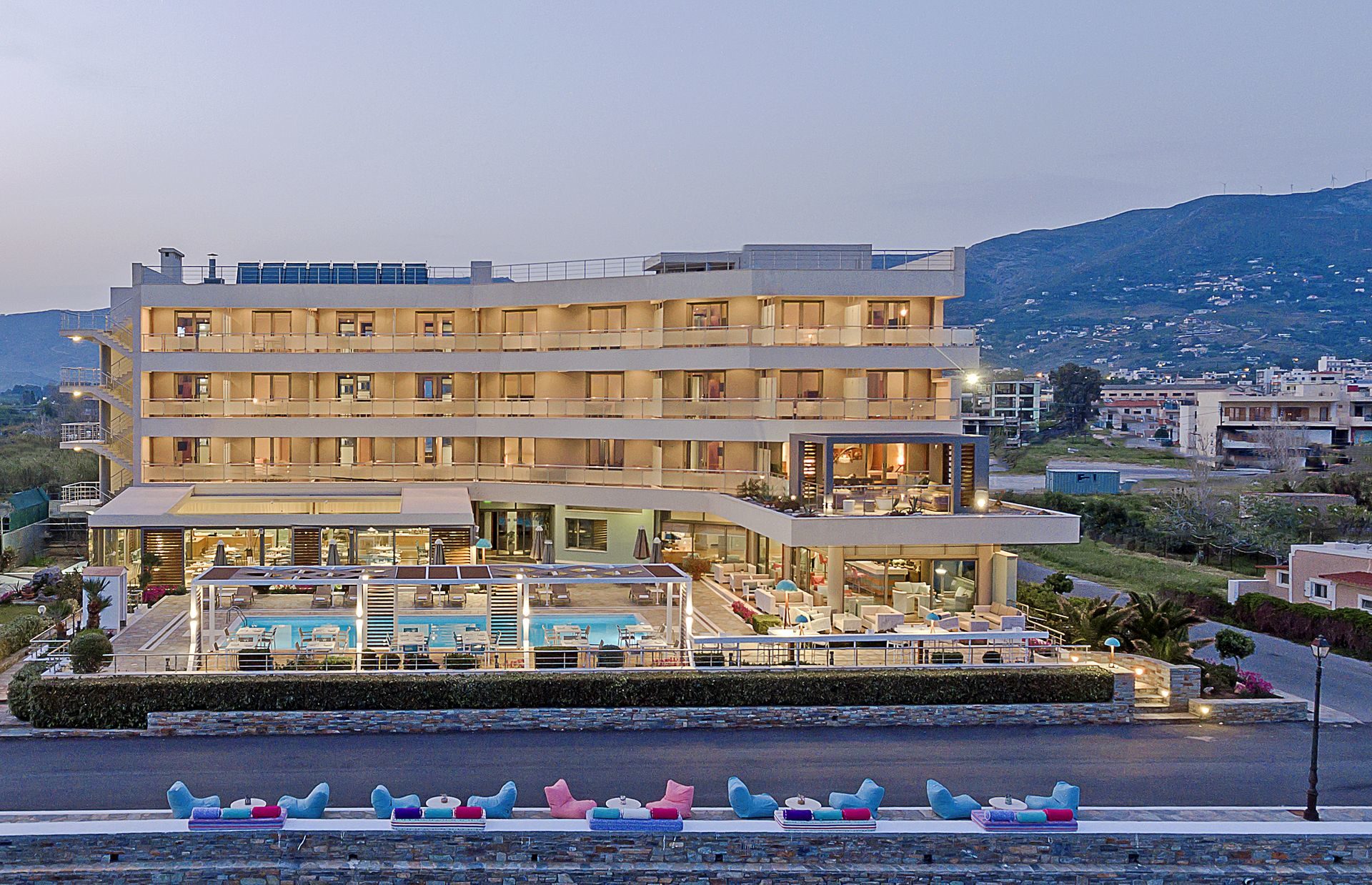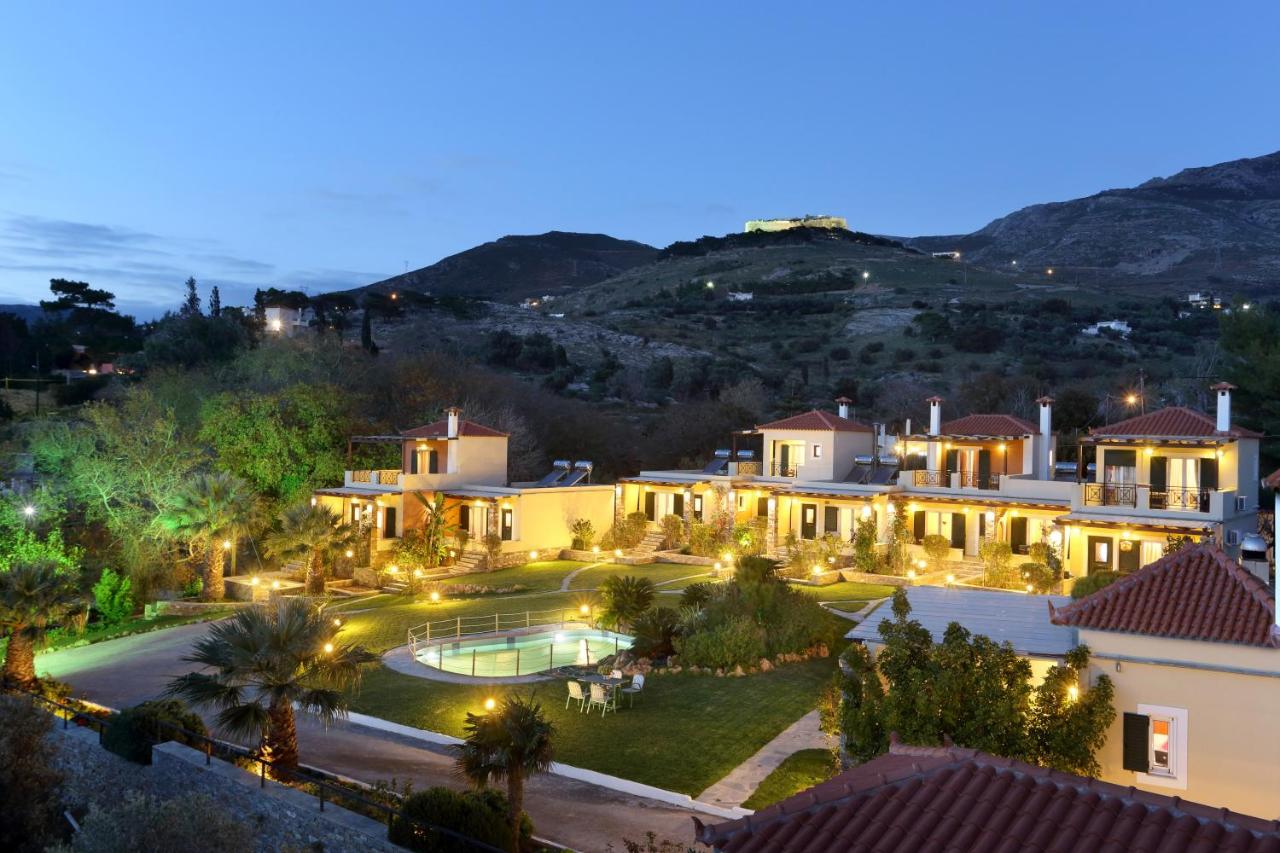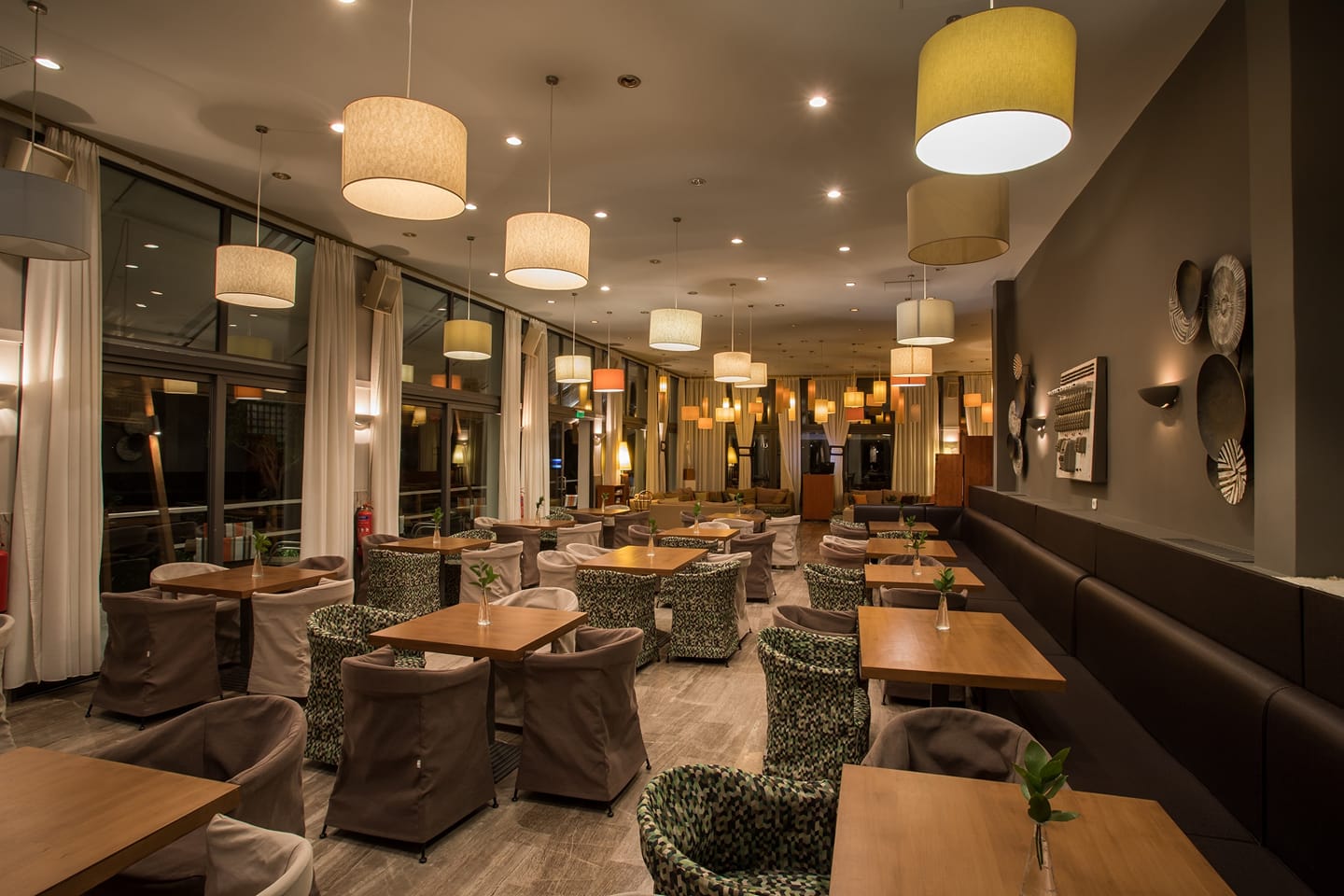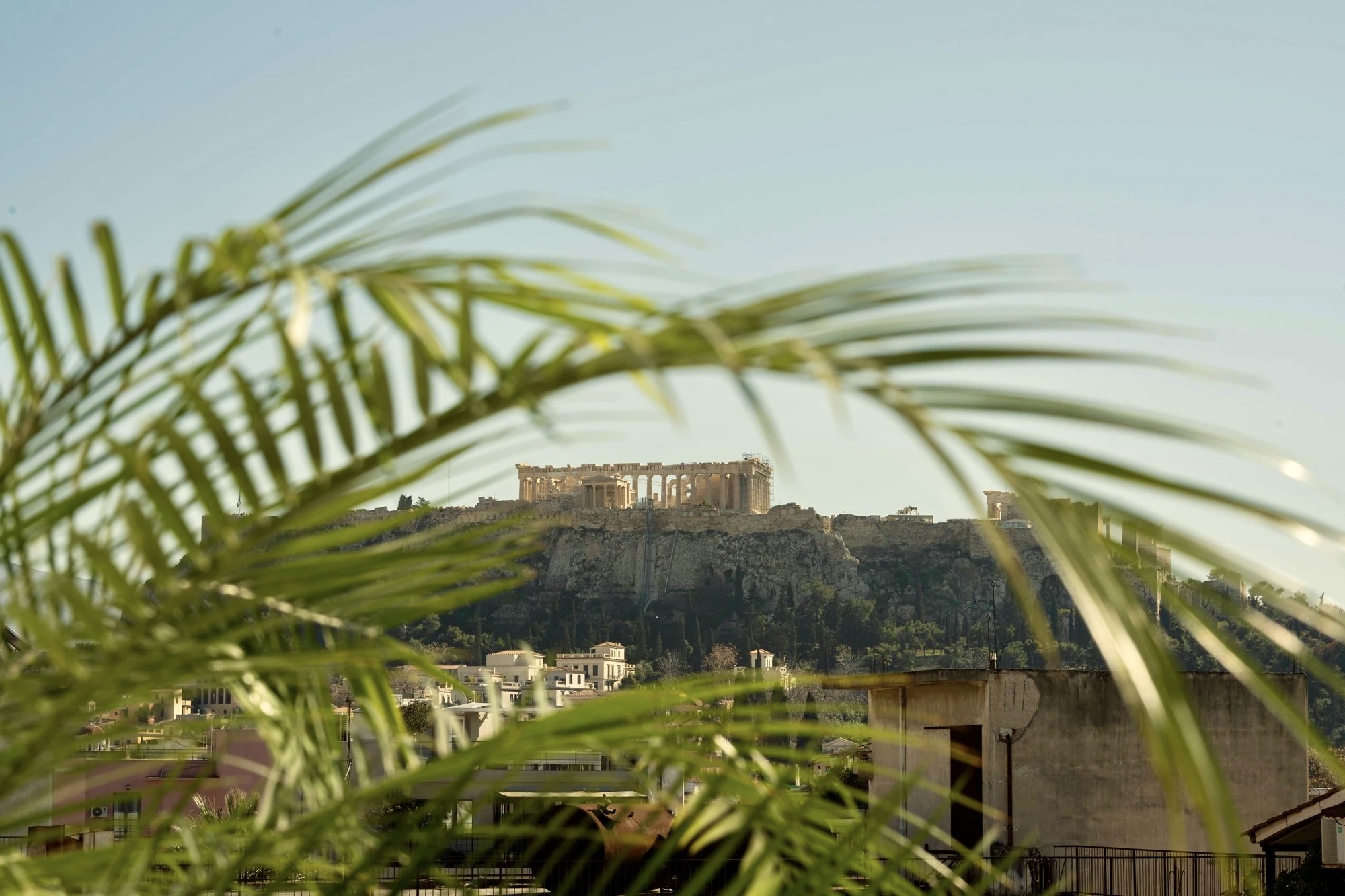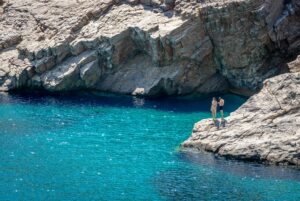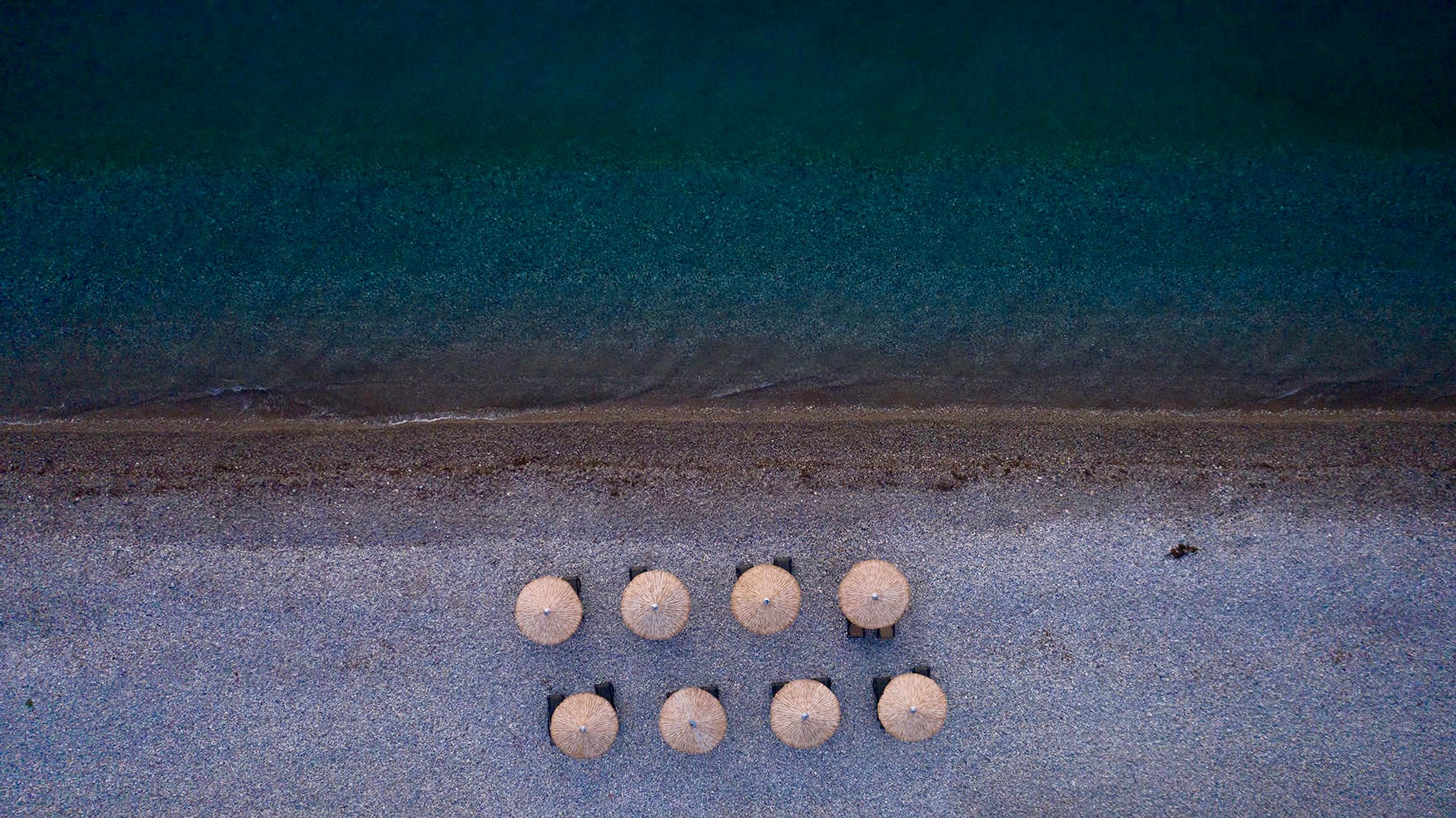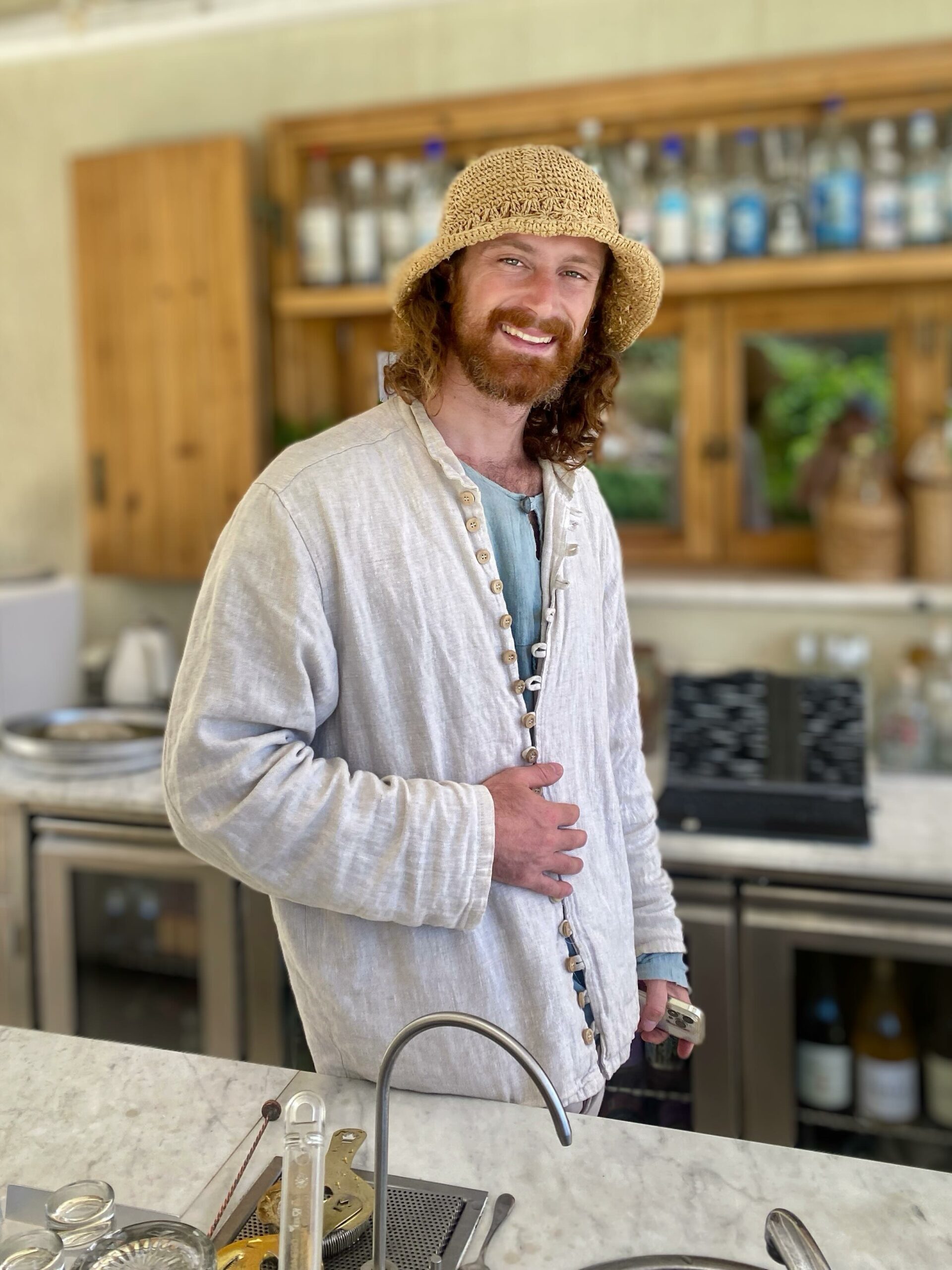Just 2 hours away from Athens, Karystos, the southernmost town of Evia gives off island vibes almost all year round. Surrounded by the sapphire and shiny sea, it resembles the Cyclades, and you can’t get enough of its port promenade with the fish boats. Early in the morning or late at night, the fish boats arrive, and the fish is packed for the fish markets of Halkida and Athens.
Bourtzi, located at one end of the port, built by the Venetians in 1350, stands solid and imposing with its many battlements and 24 hatches. Across from Bourtzi is the Archaeological Museum (0030 2224029218), while a bit further away, you’ll find the very interesting Folklore Museum (0030 2224022452, 0030 6973 688707) housed in the old mansion of the Moschona family, showcasing the Harilis Deligiorgis collections. The most impressive exhibit is, without doubt, the reproduction of a whole home of Karystos.
You’ll find the lovely 19th century neoclassical building that houses the Town Hall, made with Karystos marble and the famous Karystos slabs, in the main square, while there are a few more neoclassical buildings in the surrounding streets. In Amalias square, the bushy mulberries and the sea view will cheer you up and make you feel more playful. Mount Ochi stands behind Karystos, keeping an eye below, from a 1.400 m. altitude. The view of the Aegean is breath-taking and if you find yourself here with the right weather, you’ll be able to see the mountains of the Peloponnese, and even of Chios and Samos. Karystos spreads between the port and the foothills of Ochi, with perfectly planned wide streets that make getting around town easy. Of course, the Bavarian architect, Bierbach, who planned the town under King Otto’s orders, could not have predicted the ugly blocks of flats, all the concrete and the overall architectural mess of modern Greece. However, you’ll immediately forget about all that when faced with Karystos’ beauty and sights.
A trip to the past: the drakospito, Castello Rosso, the ancient quarries
*Just 4 km outside the town, near the village Grampia, you’ll find Castello Rosso, or Kokkinokastro (red castle), built on a hill, overlooking the whole valley up to the sea. Its name comes from the red slates in the area that have been used to make it. The first fortress was built in 1030 by the Byzantines, around 1200 the Lombards arrived and, to a great extent, changed it into its current state. Then it passed through the hands of the Byzantine, the Frankish and the Venetians, where it remained until Evia was conquered by the Turkish. The atmosphere of the castle is vibrant, and war cries can be heard through the thick walls as the centuries pass. It’s a must.
*Almost at the top of mount Ochi, you’ll find drakospito (the dragon’s house). A mysterious, huge building like the rest of the drakospita around south Evia. Built thousands of years earlier, using enormous rocks masterfully fitted with one another, without any material holding them together, without any foundations. Why were they built? By whom? No one can tell with certainty. What’s certain is that the Ochi drakospito’s vibe will leave you speechless if you decide to climb up there.
*Karystos has a lasting relationship with quarries. Its land provides the celebrated Karystos slabs. In antiquity however, this was where the great green marble, known as “Karystia Lithos” (the stone of Karystos) was mined. It was exported abroad, and it was used to make many important buildings in Athens and Rome. To get to the ancient Roman quarries, you need to follow the path that starts outside the village. After about an hour, between the villages Mekounida and Aetos, in the location Kylindroi Myloi, you will see the five huge carved monolithic columns, 12 m. long – the locals call them kylindroi (cylindres) – fallen on the ground, with the incredible view of Karystos and the islet Pelaitissa in the background, and if the weather is good, also of Tzia and Giaros.
For information and directions to visit the above contact Dimitris Serelis (0030 6944397665)
A trip to the present: horseback riding and wine tasting
*You may have seen the impressive show of the uniformed equestrian division – for the first time since 1940 – with a woman leader, during the parade on the 25th of March this year. It was organised by the very active Filippi Equestrian Club, with veterinarian Maria Tsapeta in charge, who organise horse rides, take horses to schools that invite them, offer therapeutic horseback riding, and participate in celebrations like the 25th of March parade and local traditional customs. It’s not easy to track them down, but have a look at their Facebook page: https://www.facebook.com/groups/135781943260072
*The lovely winery Montofoli Estate, of the Karakosta family, in the Old Town of Karystos, is open to visitors and has been declared an archaeological site. This is where the varieties Assyrtiko, Athiri, Aidani and Liatiko are grown, and where the sweet sun-dried wine “Ktima Montofoli” is produced, while they also make marmalade with the citrus fruits of their orchard. Crossing the gate, you enter another world. The amazing central building dates back to 1500, the neoclassical Red House is of the 19th century, while the cellar and the wine-tasting are housed in a building that used to be a Byzantine church. You can arrange a tour, wine-tasting or a stay (in villas inside the estate) by calling: 0030 22240 23951, 0030 6973 7282347, www.montofoliwineestate.com
Nearby excursions: Platanistos, Panochori
Platanistos, with its lovely waterfall, the water basin and the plane trees is one of the places you’ll remember for long. To get here you need to drive 30-40 minutes on a winding road, perhaps with some parts of it corroded by water, but nothing too hardcore. The landscape is amazing even when the plane trees have shed their leaves. And since you’ve got this far, go on for 2 km to Epanochori (Panochori) where the river Platanistos flows onto the beach Potami. Here there are watermills and stone bridges, and you can swim in the summer, like in Platanistos. In general, the place is magical.
Accommodation Food
For your stay within Karystos take note of the four-star hotel “Anastasia” (0030 2224027.222), as well as Politia (0030 2224025425). A bit further outside the town, in Grampia, you can stay at the amazing “Lithos (0030 22240-26.782), while the historic “Montofoli Estate” (0030 2224023951) is simply nonpareil.
For food within the town, go to “Agkoni” (0030 2224051558) that serves meat, seafood and well-prepared meze. Also, the ouzadiko (tavern serving ouzo –traditional anise flavoured aperitif – and meze, usually seafood) “Filippos” (0030 2224024470) with fresh seafood and fish from local fishermen is a good option. The cookshop “Cavo Doro” is also a classic, located on a picturesque cobbled alley (Sahtouri bypass, Kriezotou, 0030 2224022326) with casserole dishes, meats and fish. The restaurant of “Karystion” hotel (0030 2224022191) offers creative dishes.
Outside Karystos, go to the restaurant “Gefsiplous” (0030 2224025697) with new Greek cuisine prepared by chef Giannis Baxevanis (since March) or to “Zouras” (0030 2224025474) famous for its grilled meats. To try the local cuisine, go to the tavern “Xipolitos” (0030 6974892742) in the semi-mountainous village Pothi (half an hour drive from town). There you can try kourkoumpines (also known as gogkles, a traditional local pasta), “vouloto” lamb that is cooked in a sealed pot for hours, tiropitari (fried cheese pie) etc. Another choice for traditional cuisine is the tavern “Honi” in Katsaroni, Marmari (0030 2224024152) where you can also have kourkoumpines and casserole dishes, as well as grilled meats. A place for great meat is the tavern “Mouries” (0030 2224031760) in mountainous Paradisi, with meat from their farm.
How to get there
You’ll get to Karystos by car from Athens (200 km) through Halkida, though we don’t recommend this road in the winter, or by boat from the port of Rafina to Marmari or from Agia Marina to Nea Styra and from there by car to Karystos.



